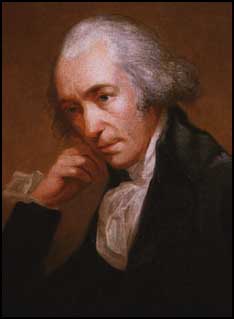Because this chapter is all about the Industrial Revolution, I thought it was fitting to choose inventors from the era for my 3 Important Figures.
For my first important person I choose......
 |
| The man himself, James Watt. |
James Watt! We have all heard of a watt, but not many know about the unit's namesake, James Watt. James Watt was a young Scotsman who helped to create a
MUCH more efficient steam engine in 1769. He took Thomas Newcomen's design, and help reduce the waste of energy. Within the next twenty years, Watt managed to improve the steam engine enough to help it become a practical form of travel that had spread throughout Great Britain. Without Watt, the steam engine would never had become a practical, efficient (and safe) mode of travel, and would have hindered the growth of the Industrial Revolution. The trains played a big part in spreading the goods, and transporting materials needed to keep up with demands. Trains also played a
HUGE part in the mining industry, which further helped the Industrial Revolution along.









